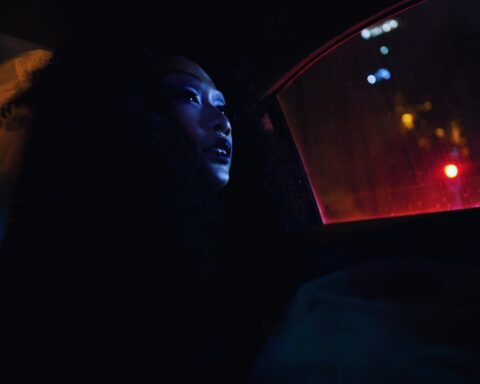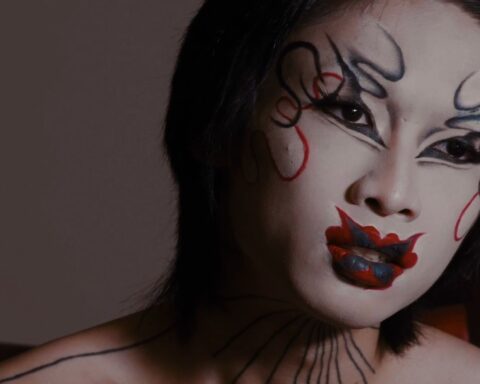I Am Sun Mu
(USA/China/South Korea, 80 min.)
Written and directed by Adam Sjöberg
Writers and creators often mourn the state of funding for culture in Canada, but Canuck critics and artists arguably take for granted their privilege to make and share their work. Freedom of speech and expression are rights in North America while artists in other countries struggle to bring their creations to audiences. The invigorating doc I Am Sun Mu opens this year’s Human Rights Watch Film Festival with a film of poetic tragedy that reveals how artists in some corners of the world face severe limitations on their rights to self-expression. The film chronicles the activist efforts of former North Korean propaganda artist turned cultural conscience Sun Mu as he readies for an exhibition of his work on the authoritarian nation. His work is shrewd and provocative, and this film is an equally strong call to action and celebration of artistic expression.
Sun Mu’s interviews with director Adam Sjöberg are reminiscent of similar scenes in the controversial Banksy film Exit Through the Gift Shop. Like Banksy, Mu masks himself from the camera’s gaze for reasons of security. Mu fears that political sensitivity towards his subversive art could invite reprisals by the North Koreans against his family. While Banksy hides behind a hood to dodge criminal charges and shape his artistic persona, Mu’s work legitimately jeopardises his family because the cost of speaking out in North Korea is astronomically high. The works of the artists are similar, but Sun Mu’s provocative art has a greater and more urgent political edge.
Mu’s likeness to Banksy is equally evident in the edgy pop art aesthetic of his work. The film invites viewers to gaze upon the catalogue of Mu’s collection as he explains how his paintings use familiar imagery and iconography to challenge North Korean ideology. For example, a portrait of a schoolgirl wearing the habitual blue skirt and red scarf offers a defiant pose atop the words “a nice place to live.” The sarcastic artwork portrays the lost hope for future generations of North Koreans if the current political regime remains in power. Crisp cinematography by Sjöberg uses the natural light of the gallery effectively to offer clear glimpses of the work on display.
The film chronicles Mu’s efforts to mount a major exhibition in China as the artist works with gallery owner Liang Kegang, who affords the film ample interview time to illuminate the tensions in the area over this politically charged event. More surprising, and effective, are the interview scenes with Sun Mu’s wife. She doesn’t give her name to the camera, but she shows her face and speaks openly about what it’s like to live in fear after challenging North Korea’s status quo. Her words complement Mu’s images as they reveal a nation in need of a voice.
I am Sun Mu becomes increasingly suspenseful as the start date for the exhibition approaches. Fears of demonstrations and surveillance are warranted, but Sjöberg also shows how Sun Mu takes advantage of the danger he may face to push even more buttons with provocative art. The film shows him develop a new piece, a sort of interactive artwork that spreads the names of Kim Jong-un, Kim Jong-il, and Kim Il-sung along the floor as a welcome mat on which patrons may wipe their feet. Nobody gets to spread dirt on North Korea’s supreme leaders, though, and a tense turn on the day that the piece launches brings the Chinese authorities to the show. Sjöberg covertly captures the propaganda machine in action as officers interrogate Liang, while demonstrators safeguard the image of North Korea on the street and show the force that artists like Sun Mu are up against while confronting an ideological beast.
The film also functions as an archival preserver of Sun Mu’s work. Now locked under quarantine by the Chinese authorities at the request of North Korea, his artwork has little hope of resurfacing in galleries across the world. It’s doubly effective that I am Sun Mu has been made since it gives the artist a large platform with which to express himself. I Am Sun Mu is a bold and compelling portrait of an artist fighting a totalitarian system and triumphing through the quality of his deliberately contentious work.
I Am Sun Mu opens the Human Rights Watch Film Festival at TIFF Bell Lightbox on Wednesday, March 30 at 8 pm.
p=.











